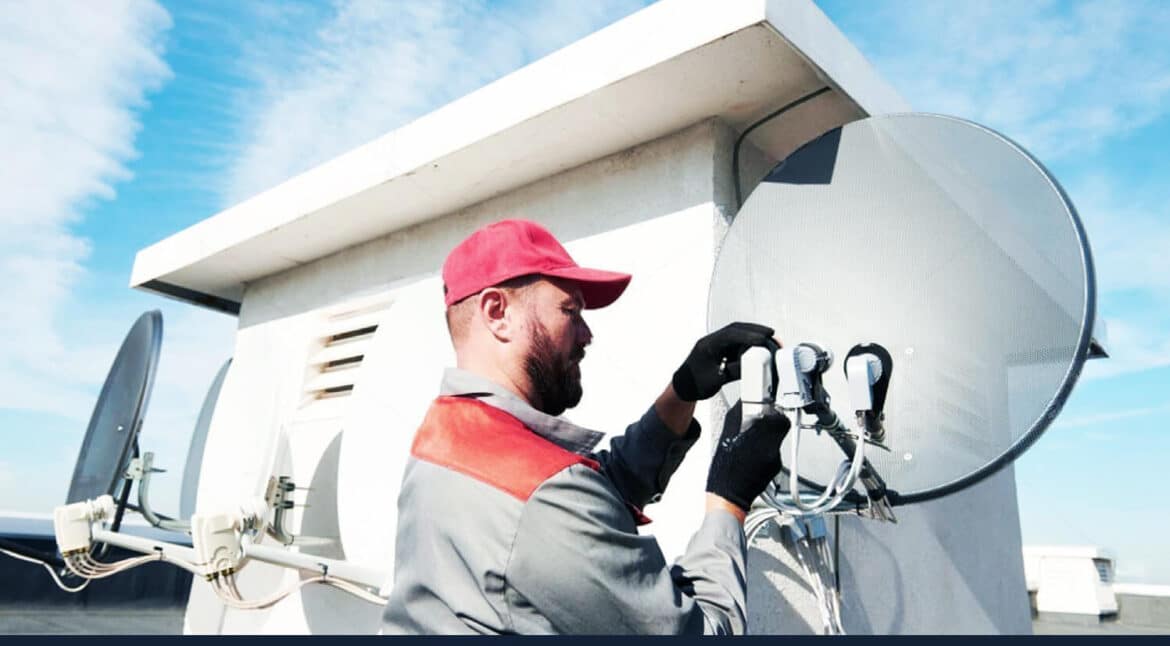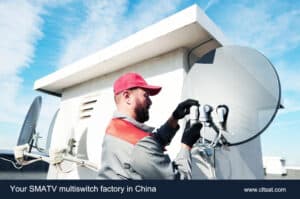This article aims to help readers understand quick and easy SMATV installation techniques. By offering practical advice, readers can more easily plan and implement SMATV system installation, thereby providing users with clear and stable television signals.
Pre-Installation Preparation of SMATV Installation
Before embarking on SMATV installation, thorough preparation is essential to ensure smooth installation and system stability.
Site Assessment:
Consider Signal Strength: Utilize professional signal detection equipment to accurately assess signal strength at the installation location. This aids in determining the optimal antenna placement for clear television signal reception.
Evaluate Accessibility: Assess the accessibility of the installation location, including the ease of access to antenna mounting positions and construction conditions, ensuring installers can safely and effectively complete the installation work.
Gathering Necessary Equipment and Tools:
Compile a list of essential items for the installation process, including but not limited to:
-
- Antenna: Select an appropriate satellite antenna based on signal strength and channel reception requirements.
- Amplifiers and Distributors: Choose suitable amplifiers and distributors based on installation location and the number of users to ensure stable signal distribution.
- Cables and Connectors: Opt for high-quality coaxial cables and connectors to minimize signal loss and interference.
- Installation Tools: Include tools such as drills, screwdrivers, and ladders to facilitate the smooth completion of installation tasks.
These preparatory steps lay the groundwork for a successful SMATV installation, providing a solid foundation for system stability and performance.
Planning Your SMATV Installation
Planning your installation is crucial for ensuring the smooth installation and efficient operation of SMATV systems.
Designing Layout:
- Plan Antenna Placement: Based on the pre-assessed signal strength and characteristics of the installation location, select the optimal antenna installation position. This should be an open area without obstructions, conducive to receiving satellite signals.
- Installing Amplifiers and Distribution Equipment: Determine the placement of amplifiers and distribution equipment based on the building’s structure and user requirements. Amplifiers should be positioned as close to the antenna as possible, while distribution equipment should be near user terminals to ensure stable signal transmission.
Creating a Schedule:
- Determine Installation Timing: Select the best installation time based on building usage and user requirements. This may involve installing during off-peak hours or non-working hours to minimize disruption to users.
- Organize Installation Processes: Develop a detailed installation plan and workflow, outlining installers’ tasks and responsibilities. Ensure all necessary equipment and materials are prepared in advance and schedule the sequence of tasks to improve efficiency.
- Minimizing Downtime: Through effective organization and coordination, strive to minimize system downtime. Ensure the installation process proceeds smoothly to promptly restore service to users and minimize inconvenience.
These planning steps contribute to a smooth and efficient SMATV system installation process, minimizing disruptions to users.
SMATV Installation Techniques
Employing correct installation techniques is crucial for ensuring system performance stability and a positive user experience.
Cable Management Techniques:
- Use Appropriate Cables: Select high-quality coaxial cables to reduce signal loss and interference. Choose suitable cable types and specifications based on actual requirements.
- Proper Wiring: Avoid overstretching or bending cables during installation to prevent cable damage or signal attenuation. Employ appropriate wiring paths to avoid interference with other equipment or materials.
- Use Cable Clamps: When securing cables, use cable clamps to ensure tidy and orderly cable management, avoiding messy wiring and safety hazards.
Antenna Alignment:
- Utilize Professional Tools: Use specialized antenna alignment tools such as satellite signal meters to accurately measure the direction and strength of satellite signals.
- Adjust Antenna Angle: Based on measurement results, precisely adjust the direction and angle of the antenna to maximize satellite signal reception. Ensure unobstructed line-of-sight between the antenna and satellite, avoiding obstructions and interference.
- Debug Signal Quality: Continuously monitor and debug signal quality during the installation process to ensure stable and high-quality signals.
These installation techniques contribute to ensuring a smooth installation process and maximizing system performance stability and user experience.
Common Troubleshooting Issues
Addressing common troubleshooting issues is crucial for ensuring the smooth operation of SMATV systems after installation.
Signal Interference:
- Identify Sources of Interference: Utilize signal analyzers or spectrum analysis software to scan and identify electronic devices, wireless signals, and other potential sources of interference near the installation location.
- Mitigate Interference Impact: Take measures to mitigate the impact of interference sources on the SMATV system, such as adjusting antenna positions, using shielded cables, and installing signal filters, to improve signal quality and stability.
Device Compatibility:
- Confirm Device Specifications: Before installing the SMATV system, carefully review the specifications and compatibility requirements of each component. Ensure compatibility and compatibility between various components.
- Test Device Compatibility: During the installation process, conduct compatibility tests on various components, including antennas, amplifiers, distributors, etc., to ensure they can work together properly and are mutually compatible.
By identifying and addressing signal interference issues and ensuring device compatibility, system stability and performance can be effectively improved, providing users with a better viewing experience.
Testing and Quality Assurance
Testing and quality assurance are essential for ensuring the smooth operation of SMATV systems after installation.
Signal Testing:
- Use Professional Testing Equipment: Use signal analyzers or satellite signal meters to test the SMATV system after installation.
- Test Signal Strength and Quality: Gradually measure the signal strength and quality of each channel to ensure stable and clear signals.
Quality Assurance Checklist:
- Develop a Checklist: Based on the specifications and SMATV installation requirements of the SMATV system, develop a detailed quality assurance checklist.
- Verify Key Tasks: The checklist should include verification of key components’ installation, connection, and settings, as well as testing signal transmission quality.
- Record Results and Rectify Issues: Record the completion status and test results of each task, and promptly rectify any issues found to ensure the system operates normally.
By conducting signal testing and implementing quality assurance checks, the performance stability of SMATV systems after installation can be ensured, and user satisfaction can be maintained.
Post-Installation Maintenance
Post-installation maintenance is essential for ensuring the long-term performance and reliability of SMATV systems.
Routine Maintenance Tasks:
- Regular Inspection: Regularly inspect all components of the system, including antennas, amplifiers, distributors, and connecting cables, to ensure they are in good working condition and free from damage.
- Cleaning Maintenance: Regularly clean antennas and equipment surfaces to remove dust and debris, ensuring good heat dissipation and signal transmission.
- Updating and Calibration: Regularly update system software and calibrate equipment parameters to maintain the system’s optimal performance state.
Troubleshooting Resources:
- Documentation and Manuals: Provide system installation and operation manuals to help users understand the basic principles and operation of the system.
- Online Support: Encourage readers to use online support channels such as official websites, forums, or customer service hotlines to obtain professional technical support and assistance with problem-solving.
By implementing routine maintenance tasks and utilizing troubleshooting resources, the long-term performance and reliability of SMATV systems can be maximized. It is recommended that users closely monitor the system’s operation status and seek professional support promptly to address any potential issues, ensuring a satisfactory viewing experience for users.
Conclusion:
This article has provided a series of quick and easy SMATV installation tips aimed at helping readers efficiently and smoothly install SMATV systems. Covering aspects such as pre-installation preparation, installation planning, installation techniques, testing and quality assurance, post-installation maintenance, and troubleshooting common issues, these tips empower readers to streamline their SMATV installation projects while enhancing system performance stability and user experience.
Encouraging readers to apply the provided tips in practice, especially in key steps such as evaluating installation locations, designing layouts, managing cables, and aligning antennas, this article emphasizes the importance of post-installation maintenance and utilizing troubleshooting resources. By continuously learning and applying these tips, readers can more easily complete SMATV installation projects, providing users with a better television viewing experience and improving system efficiency and satisfaction.







